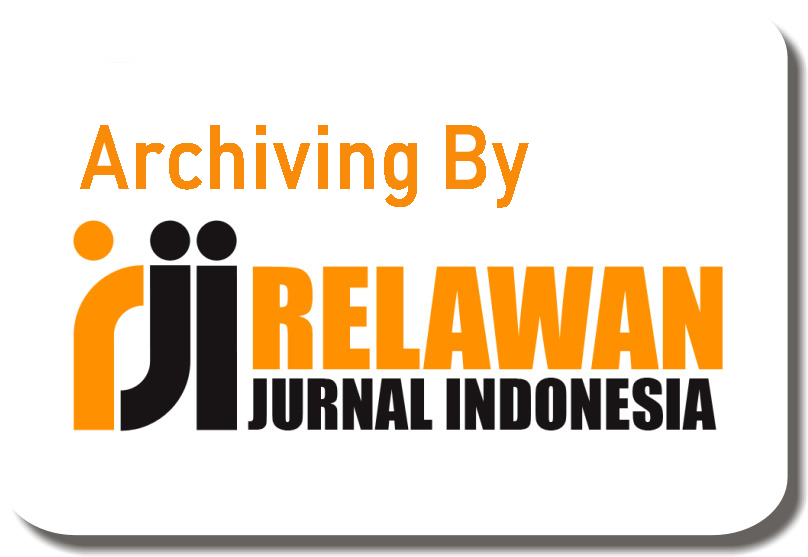Problems of Students in the Early Childhood to Elementary School Transition Period
Abstract
This study aims to determine the difficulties of children who are in the early stages of elementary school and the efforts made by teachers to overcome them. Factors that cause difficulties for children who are in the transition period of ECE SD are internal and external factors, including the lack of synchronization of the SD and ECE curriculum. The research method used is descriptive qualitative with a phenomenological approach. In this study, the instrument used was an interview guide. And the analysis used descriptive analysis. The results of this study indicate that children's learning difficulties were found in the aspects of reading, writing and arithmetic, social, emotional, psychological, and physical-motor. This will have an impact on children so that children will have difficulty learning at the elementary school level. Based on the findings, the efforts made by teachers are 1) collaborating and communicating with parents, 2) helping to direct children both in academics and socializing, 3) using differentiated learning by dividing into three groups according to their respective levels, 4) habituation, 5) activating the class with ice breaking, 6) providing free activities, 7) providing advice, and 8) establishing cooperation with other teachers. The teacher hopes that after these efforts are made, children can become more independent and can adjust to elementary school.
Keywords
Full Text:
PDFReferences
Ariana, L., & Novitawati, N. (2023). Develop children's ability to control hand movements using fine muscles through a combination of the project-based learning model and the direct instructions model in mosaic activities. Journal of Innovation, Early Childhood Creativity (JIKAD), 3(3). https://doi.org/10.20527/JIKAD.V3I3.10065
Brown, L., et al. (2021). Early Motivation and Later Achievement: How Motivation in the Transition to School Predicts Subsequent Reading and Mathematics Achievement Trajectories. Early Childhood Research Quarterly, 56.
Bulkeley, J., & Fabian, H. (2006). Wellbeing and Belonging during Early Educational Transitions Well-Being And Belonging During Early Educational. International Journal of Transitions in Childhood, 2.
Cahyati, Y. S., & Kusumah, Y. S. (2020). The Influence of Parental Roles and Family Environment on Students' Learning Motivation in Elementary School. Proceedings of the National Seminar on Science Education (SNPS),.
Duncan. (2012). Educational Psychology. Bandung: Rineka Cipta.
Deliviana, E. (2017). Preparing children to enter elementary school. Jdp, 10(2).
Djamarah, S. B. (2011). Psychology of Learning. Jakarta: Rineka Cipta.
Hamalik, O. (2014). Teaching and Learning Process. Jakarta: PT. The Earth of Scripts.
Hasanah, U. (2016). Development of physical motor skills through traditional games for early childhood. Journal of Children's Education, 5(1).
Hayati, F. (2022). Efforts to support children's English speaking skills with chicken play. Ibtida'i: Journal of Basic Education, 9(2).
Hidayat, D. Aj. J. (2023). Problems of Calistung Learning in Early Childhood. Journal of Early Childhood Islamic Education, 1(2).
Jones, M., et al. (2018). The Impact of Early School Transition on Children’s Behavioral, Social, and Emotional Outcomes. Early Education and Developmen, 29(6).
Ministry of Education, Culture, R. and T. (2022). Why is strengthening the ECE-SD transition important?
Khalawati, F. N., & Hariyanti, D. P. D. (2023). The Urgency of Children's Preparation in the Transition Period from ECE to Elementary School. A fun transition from early childhood to elementary school. Semarang.
Machmud, M. (2016). Guidance for writing final projects based on the basic principles of scientific research. Publisher Selaratas.
Mufidah, N., & Hayati, F. (2023). Speech Delay On The First Language Acquisition: Teachers‘ Perception And Teaching Strategy. International Conference on Early Childhood Education in Multiperspectives. Purwokerto: UIN Prof. KH. Saifuddin Zuhri.
Muhaiba, R., Aisy, R. R., Imaniyah, N., Sari, S. M., & Agustina, S. D. (2020). Factors Causing Learning Difficulties and Impact on the Development of Achievement of Students in Grades 1-6 of SDN Gili Timur 1. National Seminar on Education. Bojonegoro: LPPM IKIP Bojonegoro.
Mulyono, A. (2003). Education for children with learning difficulties. Jakarta: Rineka Cipta.
Musfita, R. (2019). Transition from Early Childhood to Elementary Level: Reviewed from the content of the curriculum in facilitating the process of readiness to learn to go to school. Proceedings of the National Seminar on Education.
Mwangi, M. . (2016). Parental Involvement And Strategies Used By Teachers In Supporting Children’s Transition From Pre-Primary To Primary School In Kiambu County, Kenya. Kenyatta University.
Norlatifah, N., & Novitawati, N. (2022). Develop fine motor attachment using the explicit instruction model, drill method and group B mosaic technique. JIKAD: Journal of Innovation, Early Childhood Creativity, 2(2).
Pagarwati, L. D. A., Prasojo, L. D., Sugito, & Rohman, A. (2021). Profile of the role of parents and teachers in preparing for the transition period for children to elementary school. Elementary School: A Study of Educational Theory and Practice, 30(1).
Pebriani, Handayani, 2024, Realizing a Smooth Transition: Interesting Strategies in Supporting Children Towards Elementary Education from Early Childhood Education, Journal of Information Systems and Management (JISMA) Vol. 03 No. 02 (April 2024)
Peters, S. (2010). Literature Review: Transition from Early Childhood Education to School.
Rukayah, Rachman, Novitawati, 2024, The Influence of Parenting and Parental Education Level through Children's Social Behavior on Children's School Readiness, Journal of Education Research, 5(3), 2024, Pages 2791-2801
Saniy, M. M. A. (2014). Comparison of Mathematics Learning Achievement of Students of Sampangan 02 Semarang State Elementary School Who Got Calistung and Did Not Get Calistung in Kindergarten. Educational Psychology Journal, 3(1).
Sari, T. A. P., Novitawati, N., & Sulaiman, S. (2024). The Influence of Parental Interaction: Screen Time on Social, Emotional and Speaking Abilities of Kindergarten Children. Journal of Education Research, 5(3), 3525–3535. https://doi.org/10.37985/JER.V5I3.1420
Smith, J, et al. (2020). The Role of Parent and Teacher Emotional Support in Children’s School Transition Adjustment. Early Education and Developmen, 31(6).
Susilahati, Nurmalia, L., Widiawati, H., Laksana, A. M., & Maliadani, L. (2023). Efforts to Implement a Fun Transition from ECE to Elementary School: Reviewed from PPDB, MPLS and the Learning Process. Journal of Obsession: Journal of Early Childhood Education.
Wu, J. C.-L., & Chiang, T. -l. (2015). Family structure transitions and early childhood development in Taiwan : Evidence from a population-based birth cohort study. International Journal of Behavioral Development, 39(3), 275–284.
Wulansuci, G. (2021). Early Childhood Academic Stress: CALISTUNG Learning vs Teacher Performance Demands. Golden Age: Scientific Journal of Early Childhood Growth and Development, 6(2).
Zain, A., Jubaidah, S., & Hayati, F. (2024). Teaching Colors through Play and Singing Methods for Early Childhood: An Classroom Action Research Project in Kindergarten. ALBANNA: Journal of Islamic Education for Children of Din, 42. https://doi.org/https://doi.org/10.24260/albanna.v4i2.3492
DOI: https://doi.org/10.31004/jele.v10i3.989
Refbacks
- There are currently no refbacks.
Copyright (c) 2025 Novitawati Novitawati, Nina Permata Sari, Firdha Hayati, Muhammad Andri Setiawan

This work is licensed under a Creative Commons Attribution-ShareAlike 4.0 International License.



